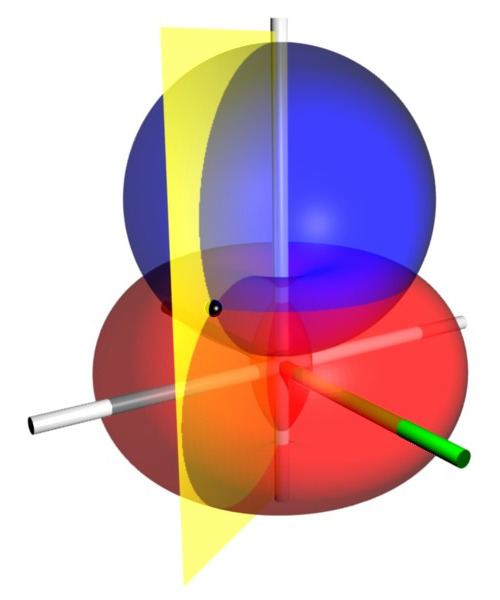 | ||
Bispherical coordinates are a three-dimensional orthogonal coordinate system that results from rotating the two-dimensional bipolar coordinate system about the axis that connects the two foci. Thus, the two foci
Contents
Definition
The most common definition of bispherical coordinates
where the
Coordinate surfaces
Surfaces of constant
that all pass through the foci but are not concentric. The surfaces of constant
that surround the foci. The centers of the constant-
Inverse formulae
The formulae for the inverse transformation are:
where
Scale factors
The scale factors for the bispherical coordinates
whereas the azimuthal scale factor equals
Thus, the infinitesimal volume element equals
and the Laplacian is given by
Other differential operators such as
Applications
The classic applications of bispherical coordinates are in solving partial differential equations, e.g., Laplace's equation, for which bispherical coordinates allow a separation of variables. However, the Helmholtz equation is not separable in bispherical coordinates. A typical example would be the electric field surrounding two conducting spheres of different radii.
